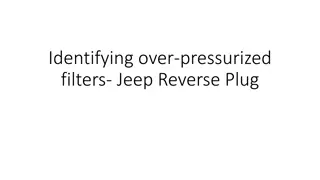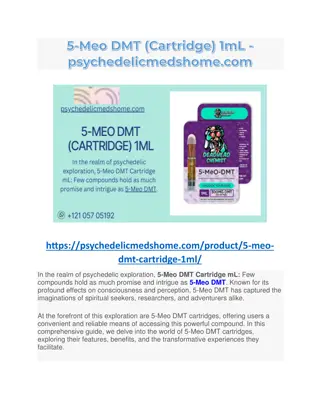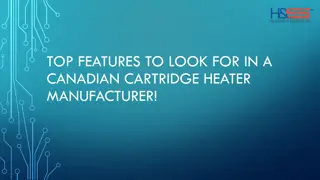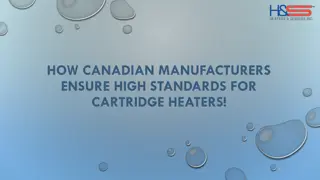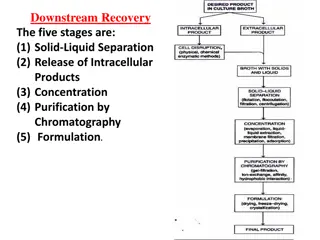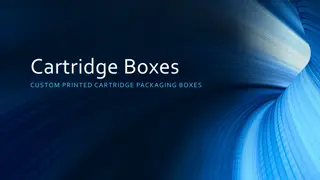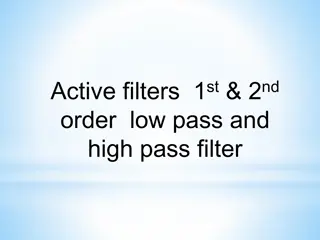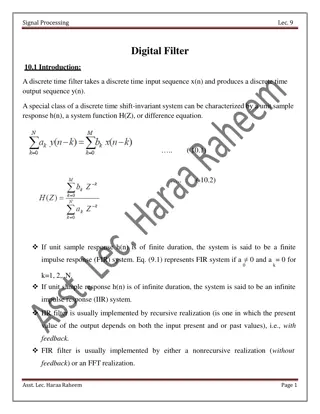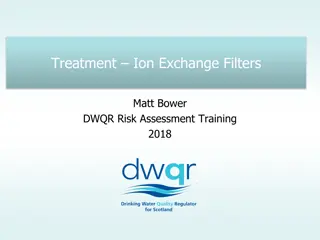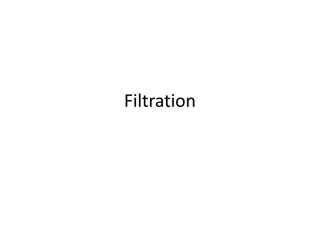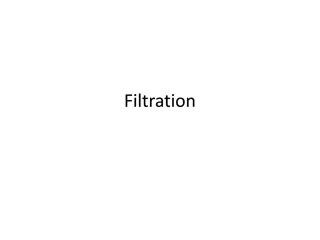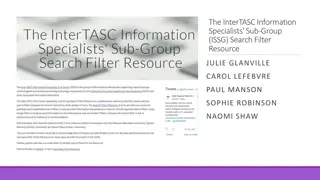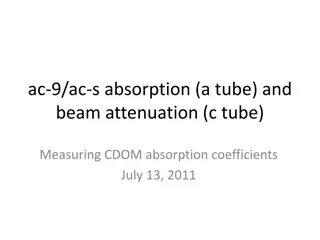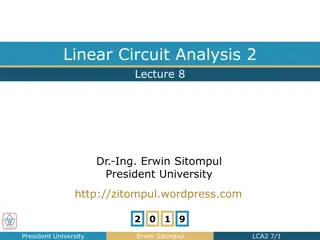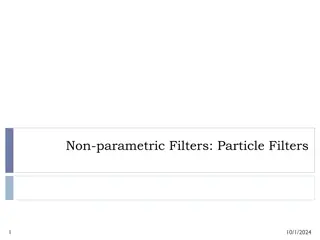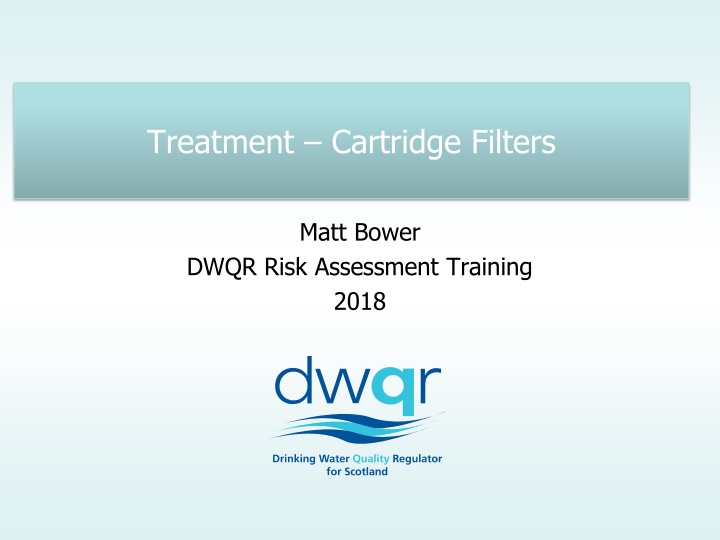
Water Treatment Cartridge Filters Overview
Learn about treatment cartridge filters, their common usage, types, maintenance, and key points to watch for in water filtration systems. Understand the importance of pre-treatment for effective water treatment and membrane protection. Explore the factors influencing filter blockage, maintenance procedures, and the impact of raw water quality on membrane plant design.
Download Presentation

Please find below an Image/Link to download the presentation.
The content on the website is provided AS IS for your information and personal use only. It may not be sold, licensed, or shared on other websites without obtaining consent from the author. If you encounter any issues during the download, it is possible that the publisher has removed the file from their server.
You are allowed to download the files provided on this website for personal or commercial use, subject to the condition that they are used lawfully. All files are the property of their respective owners.
The content on the website is provided AS IS for your information and personal use only. It may not be sold, licensed, or shared on other websites without obtaining consent from the author.
E N D
Presentation Transcript
Treatment Cartridge Filters Matt Bower DWQR Risk Assessment Training 2018
Overview Common filtration system Cost effective & simple to use and maintain Often used in series (descending pore size) Can obtain down to <1 micron (which would remove Crypto / Clostridium) May be used as pre-treatment for other processes Some contain carbon colour / contaminant removal
Overview Types Pleated paper or fibre Plastics such as polypropylene or nylon Cellulose Membrane Fibreglass Ceramics Some contain carbon for colour / contaminant removal Nominal sizing vs Absolute sizing
Usage Solids Removal Use descending size to clean water fact sheet 50 m, 20 m, 5 m (everyone has preferred approach!) 5 m often quoted as needed prior to UV Can obtain down to <1 micron (which would remove Crypto / Clostridium) Replace when clogged / dirty (monitor headloss) DWQR fact sheet
Usage Maintenance Monitor for clogging / breakthrough Isoplate, unscrew and rinse housing Check seals and insert new filter Keep spares! Chemical filters are harder need to check contaminant
Key Points to Watch For Correct size array (if keeps clogging need larger pore size first) Clogging by dissolved metals (>300 g/l Fe need removal stage) Owners using too large pore size (due to clogging) or economising by not changing filter Bypass valves open Algal growth in clear housings
Questions The integrity of the membrane is critical to ensure effective treatment. Therefore the presence of an appropriate pre-treatment is essential to protect the membrane against chemical (e.g. salinity), microbiological, aesthetic contamination or insufficiency of the supply. Pre-treatment must be adequate to prevent fouling and scaling, as well as protecting the membranes from physical damage. There should be suitable protection/screens to neutralise pre-treatment oxidants. Ask the owner to demonstrate, with suitable documentation, that the pre-treatment is adequate. The operator should provide procedures and records of the operation and monitoring of the membrane to check for integrity. Records should also be kept when membranes are replaced, including when ruptured or damaged. Could filters block with excessive frequency? (Is there inadequate coarse screening prior to the cartridge filter(s)? Installation and OperationTreatment TBF1 5 The raw water quality at each site will determine the required design of the membrane plant depending on the nature of the water quality challenge. The manufacturer will recommend specific design characteristics and pore sizes for the membranes to remove specific chemical or microbiological contaminants. Ask for evidence that the membrane plant is site-specific. The raw water quality on each supply will determine the filter type, number and size (e.g. 1 micron, 5 micron, etc) depending on the nature of the water quality challenge. The installer should specify this based on quality characteristics of the source water. Ask the owner of the supply if they have details of this specification. Are an inappropriate size grade of cartridge filter(s) being used (or in the wrong order)? Installation and OperationTreatment TBF2 5 Check the membrane's design manual requirements for specification of the cleaning (antifouling and descaling) regime. The operator should provide evidence to demonstrate compliance with this manual. Any chemicals used in the treatment stage should be specified by the manufacturer and the operator should be asked for evidence that the correct chemicals are in use. Incorrect chemicals could cause membrane damage. Is there a risk of an inadequate maintenance regime for the filter, including changing the cartridge? Management and ResilienceTreatment TBF3 5 Could a lack of spare filter cartridges or the correct size prevent safe operation? Installation and OperationTreatment The manufacturer will specify the frequency at which the filters should be replaced. Ask for evidence that this is being adhered to. TBF4 5

